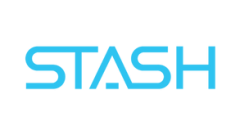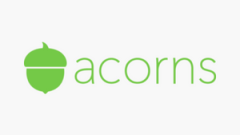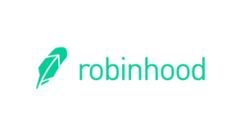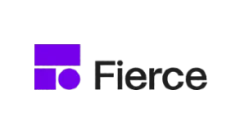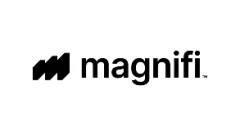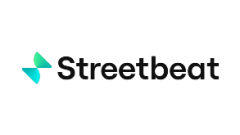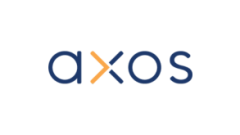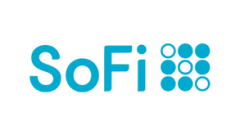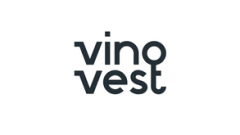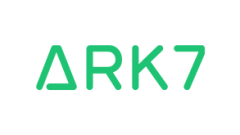- Spending
Buy Now, Pay Later (BNPL) Reviews
Menu- Popular Buy Now, Pay Later Apps Reviewed 2023
- What Is Buy Now, Pay Later and How Does BNPL Work in 2023
- Buy Now, Pay Later Statistics – 2023
- Affirm Reviews – Pros and Cons in – 2023
- Afterpay Reviews – Pros and Cons
- Apple Pay Later Review – Pros and Cons
- Klarna Reviews – Pros and Cons
- Nelo Review: Buy Now, Pay Later App
- PayPal Pay in 4 Reviews – Pros and Cons in 2023
- Splitit Review – Pros and Cons
- Zilch Review – Pros and Cons
- Zip Reviews – Pros and Cons
Credit Cards (New Content Coming Soon)
Credit Cards Tools
- Banking
Promos and Bonuses
Banking Information
- Loans
Student Loans
- Investing
Best of
Reviews
- Jobs
Best Jobs
Menu- 25 Best Jobs Without a Degree
- 20 Highest Paying Work From Home Jobs That Don’t Require a Degree
- 15 Jobs That Pay 100K a Year Without a Degree
- 10 Easy Jobs That Pay Well
- 13 Fun Jobs That Pay Well
- 8 Best Data Entry Jobs From Home
- Side Hustles for Teens
- Jobs That Won’t Be Automated
- Best Jobs for Extroverts
- Free Money
Scholarships
Government Money
MenuApps
Menu- Apps-that-Pay-Cash
- Simple Ways To Score Gifts Card Online
- Best Paid Survey Sites To Make Extra Money Quickly
- Apps That Will Turn Your Casual Gaming Into Passive Income
- Sneaky Ways To Boost Your Income By An Extra $1,000 This Month
- Secret Websites to Make Money Online
- Survey Junkie Hack
- Free Starbucks Gift Card

Hottest Investing Apps Of August 2023 - Start Building Wealth Today

The Money Manual Editors
August 22, 2023
Our website is a free resource that provides helpful content and comparison tools to our visitors. We earn advertising compensation from companies appearing on the site, which affects the placement and ranking of brands (and their products) and the scores assigned to them. Listing a company does not imply endorsement. Not all providers are featured. Our Terms of Use set out the limits of liability, and all other representations and warranties regarding the information on this page are void. The information, including pricing, on this site, is subject to change without notice.
INVESTING
Whether you’re new to investing or a seasoned pro, these are the best investing apps on the market.
Ready to take your financial future into your own hands and build lasting wealth? Investing is the key, and with the help of intuitive and user-friendly apps, it’s easier and more accessible than ever before. With just a few dollars, you can start investing right now with the help of any of the top-rated apps below. Got questions as you read? Just scroll down to the FAQ section for quick answers.
Don’t wait any longer to take control of your financial future – start investing now with these must-have apps!
TOP INVESTING APPS
Sign Up Today And Get A $10 Bonus To Get Started
- Start investing with as little as $1
- 4,000+ stocks and ETFs
- No add-on commission fees and no investing minimum
- Offers a banking account with a Stash Stock-Back Card®1
- Get a $10 bonus with your first $5 deposit
Turn Every Purchase Into An Investment ($20 Bonus At Sign Up)
- Start investing with just your spare change with Round-Ups®
- Choose between expert-built and professionally managed portfolios containing ETFs or a self-managed portfolio
- Auto-invest a piece of your paycheck each time you get paid with Smart Deposit
- Set daily, weekly, or monthly automatic recurring investments starting at $5
- Earn bonus investments while shopping at 15,000+ partner brands using the Google Chrome extension
Invest Like An Expert Without Paying For One
- Trade in real-time, 24/7 — why it’s trusted by 22 million+ users
- Invest with as little as $1 in fractional shares in top traded companies like Apple, Tesla, etc
- Access to upcoming IPOs before companies are publicly traded
- 5,000 stocks to choose from, plus ETFs, options and more
- Unlimited commission-free trades in stocks, funds and options
- Earn 1.5% interest on uninvested cash, paid out monthly
All-In-One Finance App For Investing, Banking, And Wealth Management
- Trade stocks and ETFs commission-free and without management fees
- Access regulated digital currency trading with no management fees
- Select stocks are eligible to be lent out and earn interest income
- Get a personalized news feed based on your interests and portfolio
- Offers a 5.25% APY checking account — plus a bonus of up to $500 with your first deposit of $1,000 to $100k
- View and track your bank, investment, retirement and student loan accounts all in one place
Plan, Buy, Research, and Analyze Stocks or Funds With This AI Investing App
- Plan, Buy, Research, and Analyze Stocks or Funds with this AI Investing App
- Access a commission-free marketplace of 15,000+ stocks, ETFs*, and mutual funds
- Link external investment accounts like Robinhood, E*Trade, and more for analysis across your holdings
- Talk to the AI assistant to get personalized investment recommendations, market updates, hidden risks, and opportunities
- Use research and planning tools, stock comparison, professional-level data, and portfolio management assistance
- Try for free for 7 days
Revolutionize Your Investing with AI-Powered Strategies and Real-Time Portfolio Management
- You can connect external brokerage accounts from select platforms to gain access to a suite of powerful tools or open a new account with Streetbeat
- Invest in stocks and ETFs through a selection of automated investment strategies or create your own using advanced AI technology
- Activate SmartPilot for automatic portfolio rebalancing based on analyst ratings, market data, news and more, with customizable trading frequency
- Get regular updates about all of the decisions the AI makes regarding your portfolio
- Try for free for 7 days, then pay $12.50/month or $120/year
Commission-Free Trading With No Minimum Investment
- Commission-free trades for stocks, ETFs, and thousands of no-load mutual funds
- Both traditional and IRA accounts are available
- Subscribe to Axos Elite for real-time market data, TipRanks research, expert insights, extended market hours, and a 20% options trading discount
- Flexible, competitive margin rates as low as 7%
- $0 account minimum and no inactivity fees
- Open an account in 10 minutes or less
Free AI-Managed Portfolios With Hedge Fund-Style Strategies, By Forbes
- Choose from a range of AI-powered “Investment Kits” with diverse strategies, featuring a mix of stocks, bonds, ETFs, and more
- Discover Specialty Kits for exposure to alternative assets and Limited Edition Kits that capture short-term investment themes and trends
- Customize your portfolio by choosing one or multiple Investment Kits, each containing up to 20 assets
- App’s AI manages and rebalances your portfolio, using predictive analytics to apply hedging strategies to reduce losses or market exposure
- 100% free to use and only requires a $100 deposit minimum
This App Is Used By 25 Million+ Investors Globally
- Receive a $10 bonus at account opening with a deposit of $100+ — this is a limited time offer. Terms apply.
- Invest in stocks, ETFs, or options (U.S. only) commission-free, and access 25 digital currencies
- With eToro’s CopyTrader™, you can replicate the strategies of investors you believe in
- Invest according to your values with socially conscious themed portfolios
- Free investment insurance up to 1 million Euro, USD and AU
Get Up To $1,000 In Stock At Sign Up
- Trade stocks and ETFs commission-free
- Invest in fractional shares with as little as $5
- Participate in IPOs before public trading begins1
- Create a watchlist of stocks you’re interested in and get real-time investing news, curated content, and other useful data
- Get up to $1,000 in stock when you fund a new account2
TOP ALTERNATIVE INVESTING APPS
When you feel like you have a good amount of investing experience under your belt and are confident in your portfolio, you can branch out beyond what’s common and explore other lucrative investments. There is so much more beyond the stock market, like real etsate, blue-chip art, digital currencies and more. Of course, every investment carries risk, so make sure you do your research and are cautious with portfolio allocation.
Safeguard Your Savings With Gold And Silver
- Precious metals have intrinsic value that does not decrease over time, unlike stocks, funds and bonds
- Goldco offers both self-directed Gold and Silver IRAs
- Provides IRA rollover assistance to make transferring your savings easy
- Buy and sell non-IRA precious metals bullion, coins and bars
- Get up to 10% in free silver when you invest between $50k and $100k+
Invest In High-Appreciating Wine That Outperforms The S&P 500
- Fine wine has had 10.6% average yearly returns over the last 30 years, including during economic downturns
- Vinovest uses AI tech and wine experts to build each investor a personalized portfolio with proven, high-appreciating wines
- You have 100% ownership over every wine in your portfolio and Vinovest takes care of insurance and storage
Real Estate Portfolios Delivering Stable, Market-Beating Returns
- Start investing in a professionally managed portfolio of residential and industrial properties with just $10
- Diversified real estate portfolio options managed for you
- Earn regular income from quarterly return payouts
- Achieved a 22.9% return average across all client accounts for 2021
- Low annual advisory fee of 0.15% ($1.50 for every $1,000 invested)
- New members get a $10 bonus in shares with their first $10 investment (limited-time only)
Fractional Shares Of High-Yield Rental Homes Starting At $20
- Buy, sell and hold fractional shares of expertly curated residential rental properties
- Share prices start at just $20
- Distributions are paid monthly directly into your provided bank account
- Investors have the flexibility to sell shares after a 1 year minimum holding period
- Earn $50 in bonus credits when you invest $1,000 in property shares (limited-time only)
- $1 million+ in distributions paid since 2018
TOP ALTERNATIVE INVESTING APPS
Confused about some of the terms in this post or just have some unanswered questions about investing? Search no more. Below is a cheat sheet of some of the most common investing terms, with definitions and examples.
Investing is a way to potentially grow the amount of money you have — money you can use for your different financial goals, like living life the way you want to in retirement, buying a house, starting a business or just getting to a place of financial freedom in general.
In the most straightforward sense, investing is buying financial assets, also known as financial instruments or products (but more commonly just called investments), that have the potential to increase in value over time and if they do increase in value, you sell them at that higher price to make a profit (a capital gain). You buy these investments through an investment account, of which there are various kinds.
Ready to start investing? We recommend signing up for our #1 pick, Stash.
A security is an interchangeable – meaning it can be exchanged for something else of equal value — financial asset that can typically be traded on both public and private markets. Some of the most common examples of securities are stocks, bonds, mutual funds and exchange-traded funds.
When you’re ready to start investing in securities, you need to sign up for a brokerage in order to buy them. Stash is one of the easiest options to get started with.
Also known as a share or equity, this is probably the most well-known investment type. A stock is an ownership stake in a publicly-traded company — a company that the general public can buy stock in. Think of companies like Apple, Tesla, Amazon and Facebook. When you buy stock in one of these companies, it’s kind of like buying a slice of pie, the pie being the company. And hopefully, the value of the pie piece goes up and when it does, you can sell it for a profit. Stocks can be considered one of the riskier investment types.
Interested in buying stocks? Start buying pieces of stock with Public for as little as $5.
The words “share” and “stock” are both used interchangeably to refer to the partial ownership in a company. While the term stock exclusively refers to a share in a corporate company that is traded on the stock exchange, the term share can refer to equity in a private or publicly-traded company and is not just limited to stocks.
Pro tip: Buy shares in companies before they go public on the Stock Exchange with Robinhood.
When you buy bonds, you are acting as a lender and loaning money to a business or government entity. Businesses issue corporate bonds to investors, while government entities issue municipal bonds. The U.S. Treasury also issues treasury bonds (as well other investments). These bonds all have set interest rates (typically lower than the returns stocks see), which you as the lender collect over a contractually set period of time. Once that time is up, you get the original amount you bought the bond for back. Bonds are generally considered a safer investment than stocks, though, like any other investment, they come with risks. For example, the company you buy a corporate bond from could go under or the government entity could default. Treasury bonds are generally considered to be the safest type of bond.
Instead of just buying a single kind of bond, many investors buy bond focused ETFs to diversify their portfolios. Explore Stash’s various bond ETFs.
I bonds are virtually risk-free investments backed by the U.S. government. They offer tax benefits and because of inflation their rate of return is expected to rise. Experts are now predicting that I bonds could offer a 9.6% annual return come May, 2022 based on Consumer Price Index data. I bonds pay both a fixed rate return — set by the US Treasury Department — and an inflation-adjusted variable rate return. That changes every six months based on the Consumer Price Index. Because of that, I bonds are particularly attractive investments during inflationary periods.
With mutual funds, money from various investors is pooled together and put towards a broad selection of investments. Mutual funds are managed by a professional who picks the investments for the pool of investors and works to get them returns or income from said investments. Mutual funds are typically managed with the goal of beating — as in doing better than — a particular market index. A market index is essentially a hypothetical portfolio of a mix of investments that represents a section of the larger financial market, For example, the S&P 500 is an index of the 500 largest publicly traded U.S. companies across various industry sectors that are valued at more than $8.2 billion (among other criteria). We talk more about the S&P 500 further down.
ETFs are similar to mutual funds because they are also a collection of investments that track a particular market index. With in an ETF, you can own a basket of investments (like stocks and bonds) that correspond with a specific sector or industry, asset class, investment style, foreign market, and so on. But unlike mutual funds, ETFs are traded on the stock market on an exchange, meaning they can be bought or sold throughout the trading day (9:30 a.m. to 4 p.m. EST). Because they trade on the stock market (which is ruled by supply and demand), their price does fluctuate throughout the trading day. They also tend to have lower fees, or no fees, in comparison to mutual funds.
Many beginner investors start with ETFs because they are an easy way for them to diversify their portfolios. Public has nearly 50 for you to choose from.
An index fund is a type of mutual fund or exchange-traded fund (ETF), however, the investments in these funds are modeled after or are made to track the returns of a particular market index — like the S&P 500. The goal is for the index fund to perform the same way as the market index it’s modeled after or tracks. An index fund is a great way to diversify your portfolio and is often used to make up the core of an investor’s portfolio.
Many expert investors suggest index funds as a way for new investors to start their wealth building journey. Explore popular index ETFs available through Robinhood.
A fractional share is less than a whole share of a stock, bond or ETF, making it more affordable to buy. Going back to the pizza analogy, think of a company like Amazon as an eight-slice pizza pie and one slice as a single stock. Imagine if someone took one of those slices and then split it up into four smaller slices. Those smaller slices are fractional shares, and because they are much smaller than the original slice, they cost less. So, if a company’s stock is selling for $1,000 apiece and you might not be able to afford that, but because you still want to get in on that stock, you could buy one-fifth of that whole stock (20%) for $200.
Fractional shares are not typically available on the stock market and cannot be sold on the stock exchange. However, they are available through brokerages and can be bought and sold through them.
Interested in buying fractional shares? You can start with as little as $1 with Stash.
A stock exchange is a marketplace where stocks, bonds, ETFs and other securities that are issued by companies are bought and sold publicly. The stock exchange essentially serves as a middleman for companies and investors. It helps companies raise the money they need for operations, and investors ideally buy into a company that will make them a profit if said company performs well and grows in market value. In the United States, we have the New York Stock Exchange. Other countries have their own securities markets.
This is a taxable investment account that can be used to buy and sell a variety of investments, including stocks, mutual funds, bonds, ETFs and more. There are individual brokerage accounts that can be opened by a single person, or joint brokerage accounts that can be shared by two or more people. You can contribute as much money as you want to a taxable brokerage account. Money can be withdrawn at any time, but if the money you’re withdrawing is from an investment you sold at a capital gain, you may owe taxes on it.
Interested in opening a brokerage account? We recommend signing up for our #1 Pick Stash. It only takes a few minutes.
The S&P 500 is a stock market index that tracks 500 of the largest publicly-traded companies in the United States. The companies that make up the S&P 500 are meant to be a representation of the industries that make up the U.S. economy. Because of this, the S&P 500 is used by analysts, economists and investors alike to measure how well the stock market is performing overall. Inclusion into the S&P 500 is determined by various factors, including the total value of a company’s shares, the revenue it brings in, and other factors. Though you can’t directly invest in the S&P 500, you can invest in an exchange-traded fund (ETF), index fund or mutual fund that mimics the S&P 500 index.
For risk averse investors, experts recommend investing in an index fund that tracks the S&P 500. Many online brokerages — including Stash — offer index funds that track the S&P 500.
Short selling, which can be done for stocks and other asset classes, is an investment strategy where an investor is betting against the asset they are investing in, meaning the investor is hoping to profit from the asset decreasing in value. For this kind of strategy, an investor borrows stock (like a loan) from a broker, sells the stock and then buys the stock back, ideally at a lower price than they sold it for, and then returns the stock to the lender. The difference between how much the investor borrowed the stock for and how much the stock was bought back for is the investor’s profit.
So, for example, let’s say an investor thinks that Tesla stock, priced at $866, is overvalued, meaning the investor thinks the price of Tesla stock is too high for what the company itself is earning, so they expect Tesla stock to drop in price. Because of that they borrow 15 Tesla shares from a broker, sell each share at the current $866 per share price and then the share price drops in value as the investor predicted by let’s say $300. That investor then buys those 15 shares back at their new price of $566 and returns them to the broker it was borrowed from and the investor nets that $300 per share difference. That investor made $4,500 from short-selling Tesla stock.
Though it can be lucrative, short selling is very risky and should be left to experienced investors.
Adding real estate to your portfolio can be a great way to diversify your investments and it can be very lucrative. There are a couple of different ways to invest in real estate. If you have the means, you can buy rental property or you can flip houses. Both options require you to put up a lot of money upfront and take on a lot of responsibility in terms of property maintenance, which will also end up being expensive. If that’s not something you can afford, or you don’t want the hassle that comes with homeownership, you can get exposure to real estate with real estate investment trusts (REITs), real estate funds or through real estate investment platforms, some of which use crowdfunding methods.
REITs allow you to invest in real estate via companies that own, operate or finance income-producing real estate properties – like retail buildings, apartment complexes and hotels. A real estate fund focuses on investing in securities, like stocks, offered by real estate companies. As for real estate crowdfunding platforms, some offer REITs and funds that individuals can invest in, while others offer properties that they have acquired and investors can buy shares in for partial ownership.
Interested in investing in real estate? You only need $10 to start with Fundrise.
These are tax-advantaged (an account that is either exempt from taxation, is tax-deferred, or that offers other types of tax benefits) investment accounts people use specifically to save for retirement. There are various kinds of retirement accounts, but the most common ones are 401ks — an employer-sponsored retirement plan — and an individual retirement account (IRA) — offered by individual financial institutions, including banks, investment firms and credit unions. There are variations of both of these retirement accounts – traditional and Roth — both of which come with limitations and benefits.
There are two major differences between a Roth and traditional 401k and IRAs. The first is that the money that goes into a traditional 401k or IRA is untaxed and will be taxed at the time of withdrawal. With a Roth 401k or IRA, the money gets taxed before going into the account and can grow tax-free up to the time you withdraw it. The second is the annual contribution amount that the IRS allows you to put into a Roth and traditional 401k and IRAs. For 2022, the contribution limit for both traditional and Roth 401ks is $25,500. If you are 50 or older, you can contribute an additional $6,500 to play catch up if needed. For traditional and Roth IRAs, the contribution limit for both is $6,000, and you can make an additional $1,000 contribution if you are 50 or older.
IRAs are great options for investors because of their tax advantages. Open a Roth IRA or a Traditional IRA with Stash.
An NFT is a digital asset that is used as proof of ownership of a unique (therefore not interchangeable like a security) real-world object, like art, real estate, collectible memorabilia, videos, music, etc. To put it simply, it’s a digital certificate that says something is yours, and this digital certificate of ownership is stored with the same kind of blockchain technology that popular digital currencies use. NFTs have become an extremely popular asset class in the last few years because the blockchain technology that NFTs use makes it extremely difficult for anyone to fraudulently modify records of ownership and it makes buying, selling and trading these unique real-world objects more efficient.
At the root of it, investing is about judgment calls. The goal is to buy low and sell high.
Historically, any time after a market crash is a good time to buy because stocks will be available at a lower price. And remember, market downturns don’t last forever. After a market correction — the sudden drop in a stock or market index’s value, typically by more than 10% — can also be considered a good time to buy. Corrections can help lower overinflated prices for popular stocks and indexes, making it cheaper to buy-in. And generally speaking, it’s a good time to buy a stock if you’ve done your research on it, you think it has real potential to increase in value over time and you’re willing to hold on to it until it does.
It’s important to be patient and not sell off your stocks (or buy) impulsively just because they haven’t increased in value at the pace you want them to or because of analyst projections (remember, their work also involves some guessing). If you’ve done your research and are confident in the potential of the stock you’ve purchased be patient. It can take years for a stock to appreciate to its true value.
There are a lot of reasons why an investor should or could sell their stock. For one, maybe that stock has done well, and they want to cash in on the profits. Some investors may also sell if they have lost faith in the company they own stock in, if they need to liquefy their assets for something like an unexpected expense, to rebalance their portfolio to maintain their ideal investment mix, or to save on taxes.
Some online brokerages offer better educational resources than others to help investors with their decision making. Stash, for instance, has a really stellar library of educational content.
OUR #1 PICK
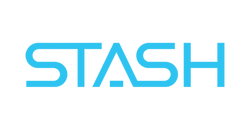
Stash Disclosures
For Content Related To Stash:
Paid non-client endorsement. See Apple App Store and Google Play reviews. View important disclosures at https://www.stash.com/start-investing/impactprong2.
Nothing in this material should be construed as an offer, recommendation, or solicitation to buy or sell any security. All investments are subject to risk and may lose value.
1 Stash Banking services provided by Stride Bank, N.A., Member FDIC. The Stash Stock-Back® Debit Mastercard® is issued by Stride Bank pursuant to license from Mastercard International. Mastercard and the circles design are registered trademarks of Mastercard International Incorporated. Any earned stock rewards will be held in your Stash Invest account. Investment products and services provided by Stash Investments LLC and are Not FDIC Insured, Not Bank Guaranteed, and May Lose Value.
Ancillary fees charged by Stash and/or its custodian are not included in the subscription fee.
*Offer is subject to T&Cs
For Content Related To SoFi:
Active Investing and brokerage services are provided by SoFi Securities LLC, Member FINRA/SIPC, (“SoFi Securities”). Clearing and custody of all securities are provided by APEX Clearing Corporation.
SoFi Crypto is offered by SoFi Digital Assets, LLC, a FinCEN registered Money Service Business.
For additional disclosures related to the SoFi Invest platforms described above, including state licensure of SoFi Digital Assets, LLC, please visit SoFi.com/legal.
Neither the Investment Advisor Representatives of SoFi Wealth, nor the Registered Representatives of SoFi Securities are compensated for the sale of any product or service sold through any SoFi Invest platform. Information related to lending products contained herein should not be construed as an offer or pre-qualification for any loan product offered by SoFi Bank, N.A.
1Investing in an Initial Public Offering (IPO) involves substantial risk, including the risk of loss. Further, there are a variety of risk factors to consider when investing in an IPO, including but not limited to, unproven management, significant debt, and lack of operating history. For a comprehensive discussion of these risks please refer to SoFi Securities’ IPO Risk Disclosure Statement. IPOs offered through SoFi Securities are not a recommendation and investors should carefully read the offering prospectus to determine whether an offering is consistent with their investment objectives, risk tolerance, and financial situation.
New offerings generally have high demand and there are a limited number of shares available for distribution to participants. Many customers may not be allocated shares and share allocations may be significantly smaller than the shares requested in the customer’s initial offer (Indication of Interest). For SoFi’s allocation procedures please refer to IPO Allocation Procedures https://www.sofi.com/invest/ipo-investing/#allocation.
2The probability of a member receiving $1,000 is a probability of 0.028%.

